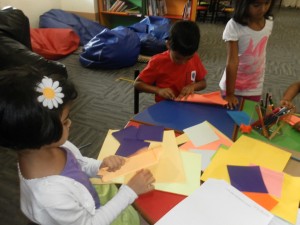
Terrorism struck Mumbai yesterday evening, first time since the November 2008 incident in which “10 terrorists laid siege to the city for 60 hours, targeting two luxury hotels, a Jewish center and a busy train station” (TNN, 2011). In this case, three IEDs were detonated, one in each of the following financial/commercial areas: Opera House; Dadar; Zaveri Bazaar. Officials report that the explosions occurred between 6:50 and 7 pm on Wednesday, July 13.
Blackberry messages alerted our coworkers of the incident as we concluded class around 7 pm. We scrapped our plans to catch a screening of “Delhi Belly” and instead walked home, wondering whether pedestrians’ behaviors seemed different, or if we were just regarding pedestrians’ behaviors with different eyes. Do people seem more on edge? Emily asked. Besides the inextricability of our own affected lenses, there was also the confounding variable of incipient rain, which could make anyone anxious. Impossible to tell, I concluded. And we continued heading for cover.
For a couple of Americans, going to work at the World Trade Center less than 24 hours after financially-targeted terrorism has rocked the city… well, it’s somewhat bizarre, to put it mildly. We dodged puddles as monsoon conditions (really just rain), for the first time since our arrival, complicated our morning commute. No time was lost in security, however — that is, no extra time. As always, we opened our bags for two security personnel upon entering the World Trade Center compound at Gate 4. Inside Center 1, we walked past security guards, put our bags on the metal detector’s conveyor belt, walked through the scanner, and continued on our way. No additional personnel were detailed, no extraordinary procedures were invoked. We waited for an up elevator amid an average-sized crowd of businessmen, and climbed aboard after an average-length interval had elapsed. Business as usual. First floor. Excuse us. We’ve got to go teach five-year-olds how to fly.
As we set up the classroom, Emily asked Malika what to expect from the kids. Will they be upset about the situation? she inquired. Malika assured us that this sort of thing was common enough, and parents wouldn’t be too shaken by it as to produce a tense atmosphere at home. How should we talk about all of this with them? Emily persisted. Malika recommended saying as little as possible. We braced ourselves for what was to come (and prepared our curriculum — it was still another day of demystifying lift and air pressure). Vasundhara had contacted parents the previous night, trying to ascertain whether enough parents would send their children today in order to justify our session. Only four children were definite No’s — but in the end, out of a class of 14 youngsters, only four children were definite Yes’s. With three teachers and a cleaning-oriented aide… those are some ratios.
And the first thing that those attendees did upon entry was head to the block area, talk of terrorism on their lips.
CHILD 1: There’s a bomb in India.
CHILD 2: In Opera House.
CHILD 1: Let’s build Opera House.
CHILD 3: I saw it on the news channel.
CHILD 2: All of the others are scared of the bomb. The three of us will go to a single table.
It was textbook.
I jotted their dialogue and supported their efforts to build Opera House, a fire brigade, a helipad, my house, a plane, and a birthday cake with candles. They talked about emergency rescue and superheroes, with mentions of the bomb periodically peppering their discourse. It was difficult to determine the extent to which the pretend phone calls reporting fire and simulated superhero combat was influenced by current events — both play scenarios are daily staples, especially for one special needs child. As a special treat, teachers delighted students with some chasing and full body tickling. Maybe we all needed to blow off a little steam.
We wrapped up our extended session in the block area and, once again, our students noticed that there were only four little pairs of hands to assist in classroom activities.
CHILD 2: All four of us, our mothers didn’t get scared.
CHILD 3: My mother got scared but my father didn’t get scared.
I read them a story during snack, a tale they found humorous (thank goodness, not ominous) about an inventor who creates robots that run amok and destroy his workshop. We showed them videos of flying creatures, which surprisingly failed to captivate their fascination. We hoped that our special needs friend would thrive in this less-stimulating environment but he still struggled to control his impulses and focus on curriculum. We charted the four forces and the relationship between airfoils and air pressure before singing the children goodbye, and it seemed as though at least two of the kids got it. Whether they’ll be able to speak about it to their parents (who may or not be product-oriented, may or may not be scared) I cannot say.
Malika ordered us McDonald’s for lunch and we waited for its delivery… and waited… and waited. Several phone calls to various managers didn’t seem to produce results. Only the language of financial violence — threat to not pay for the food — prompted a return call from a middleman who apologized and said, if Malika did not pay, the money would be pulled from his own shallow pocket. An hour and 15 minutes after its specified delivery time, the food arrived, and Malika got through to corporate, settling the matter so that neither she nor this poor, powerless employee would have to pay.
We weren’t sure what would manifest in the afternoon. Parents had said they were sending their kids but we’d heard a similar tune the previous night. The artist who had agreed to ply our hands with mehndi canceled. Malika left for her appointment. We planned an itinerary that would allow Emily and me to work together — more practical considering our staffing and possible low numbers.
Everyone showed.
The afternoon flowed smoothly, alternating between games and serious science. We’d made it through our last full day of instruction, as Friday is divided — one quarter curriculum, one quarter preparation, one half Open House. Emily and I bought snacks for our Bollywood movie night at home with Malika, who wound up canceling. We drank the wine ourselves and let the Gilmore Girls, well-known friends to Emily and me both, engage in their fast-talking banter as we wrote the final newsletter and commented on this week’s student journals.
Tomorrow is our last day of EMP, and not a city-wide holiday as yesterday’s unsubstantiated rumors had alleged. Emily has said that teaching is improv — you have to embrace the unexpected and adjust without getting bent out of shape. This time last week, I was recovering from a fever and stomach bug; this time next week, I’ll be back in Glenview — that is, if all goes according to plan.
I can’t conclusively know what’s coming next, and that’s the point of some of the education reform arguments I’ve read and happen to have made myself. Since we live in a world of constant change, all we can do is hone our agility, enhance our ability to react to what comes… and perhaps develop our serenity as we lie in anticipation, practice our acceptance of the (inevitable) unexpected.





